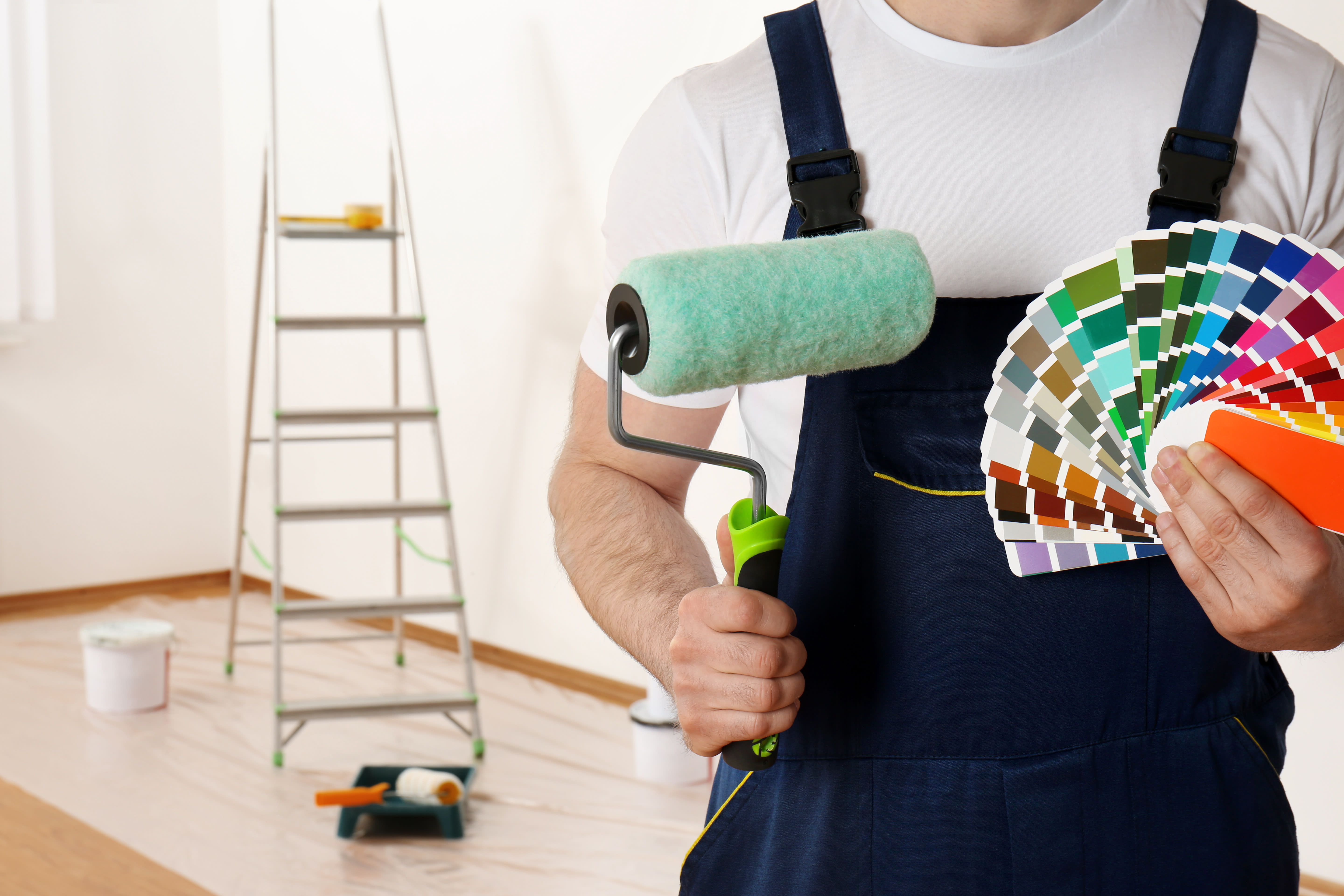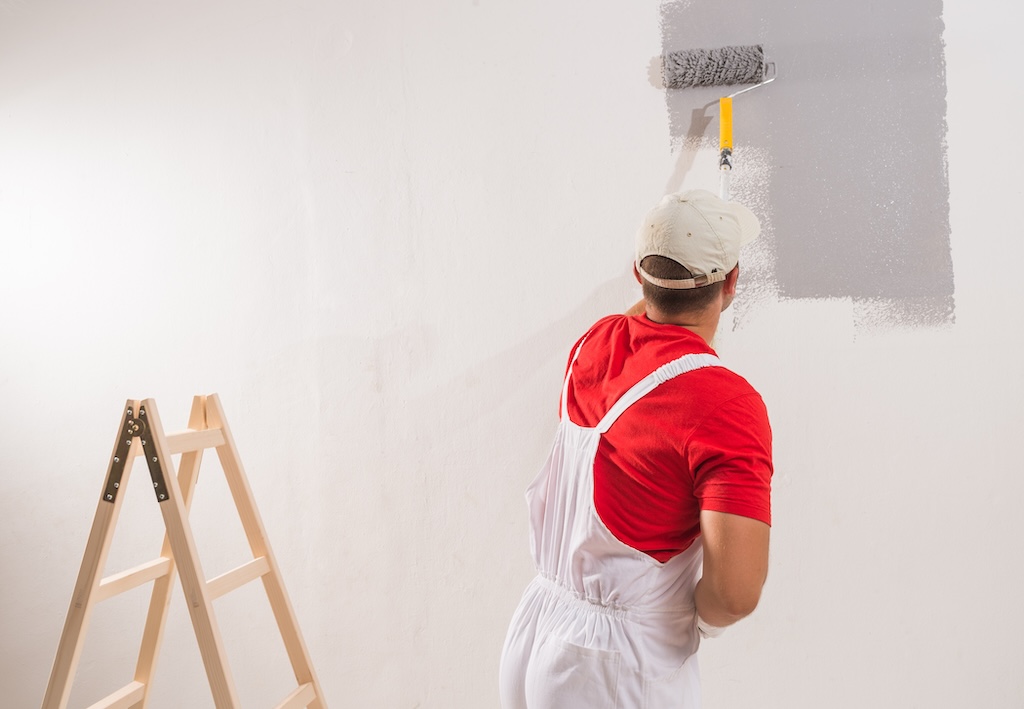Stay Ahead With New Paint Trends: Blending Strategies for Modern Interiors

The Surge of Color Gradients in Inside Style
As designers significantly seek ingenious ways to boost spaces, the rise of color slopes in interior design has amassed significant focus. This method, identified by the smooth shift in between 2 or more colors, enables a dynamic aesthetic result that can change a common area into a lively environment. Color gradients can evoke feelings, affect understandings of room, and create focal points, making them a functional choice for different style styles.
The application of slopes extends beyond walls; they can be effectively employed in furniture, textiles, and devices. Developers frequently explore differing tones to achieve depth and intrigue, appealing to a variety of looks from minimal to eclectic. In enhancement, the flexibility of slopes allows their usage in both domestic and business setups, satisfying diverse customers. As fads advance, the usage of shade slopes indicates a change in the direction of even more meaningful and tailored interior spaces, showing individual tastes and way of lives.
Accepting Ombre Methods for a Dynamic Look
Ombre techniques have become a charming selection for those aiming to add deepness and activity to contemporary insides. This slope impact shifts smoothly from one color to an additional, developing an aesthetically striking focal point in any kind of space. Developers value ombre for its convenience; it can be put on walls, furnishings, or perhaps ornamental accents, permitting unique expressions of style.
The method works specifically well with soft colors, giving a tranquil ambiance, while vibrant colors can invigorate a space. Homeowners can try out various shade palettes, picking contrasting tones for a dramatic influence or unified tones for a subtle result. The application of ombre is not limited to a single wall surface; it can prolong throughout a room, improving the perception of area and light.
As a contemporary pattern, ombre techniques accommodate varied tastes, permitting people to personalize their insides and embrace imagination in their design technique. paint shops in corpus christi.
Distinctive Walls: Layering Paint for Deepness and Passion
Textured walls can substantially enhance the visual allure of modern-day insides by adding deepness and interest. Methods for developing appearance, thoughtful shade combinations, and the right tools for layering are crucial parts in achieving this effect. Checking out these elements permits a vibrant and tailored approach to interior style.
Strategies for Texture Creation
Developing aesthetic interest in indoor areas usually pivots on the artistic application of appearance. Numerous strategies can be used to attain this, such as sponging, cloth rolling, and stippling. Sponging entails making use of a wet sponge to apply a second color over a base coat, developing a soft, varicolored result. Dustcloth rolling, on the other hand, utilizes a rolled rag to apply paint, causing an extra dynamic structure. Stippling uses a stiff brush or tool to swab paint onto the surface, developing an unique pattern. Additionally, layering various surfaces, such as matte and shiny, can improve depth. These techniques not just give aesthetic charm however likewise contribute to the total setting of contemporary interiors, encouraging a tactile experience.
Color Combinations for Effect
Layering paint not only enhances structure however also opens a world of shade combinations that can significantly influence the mood of an area. By blending corresponding tones, designers can develop a harmonious result that invites warmth or coolness, relying on the preferred atmosphere. As an example, rich planet tones coupled with soft pastels can evoke a tranquil atmosphere, while vibrant, contrasting colors can add vibrancy and power. In addition, including shiny or metallic surfaces within the layers can introduce a dynamic visual element, capturing light and improving the depth of the color pattern. Inevitably, thoughtful color combinations via layering paint provide a chance to share individual style while transforming normal wall surfaces into bewitching prime focus.
Tools for Layering Impact
Numerous tools are necessary for attaining a successful layering result in paint applications, which can transform wall surfaces into captivating visual experiences. Brushes and rollers are essential, with diverse dimensions permitting various appearances and coatings. Specialized devices like dustcloths and sponges can develop unique patterns and depth, while combination knives supply precision for more specified lines. For larger areas, using a stippling brush can add a detailed finish. Additionally, spray guns can efficiently apply several layers for a smooth, also coat. Painters must additionally think about painter's tape to create clean edges between layers. By utilizing the right tools, one can efficiently improve the visual appeal of interiors, making each wall an appealing prime focus.

The Power of Shade Blocking in Modern Spaces
As modern indoor design remains to progress, color obstructing becomes a powerful strategy that can transform areas with vibrant visual influence. This method involves the strategic placement of contrasting shades to produce defined areas within an area, boosting both the aesthetic charm and functionality of the room. paint shops in corpus christi. By utilizing big swathes of shade, developers can guide the eye and highlight architectural components, resulting in a dynamic ambience
Color blocking is not restricted to wall surfaces; it can additionally be put on furniture and style, allowing for limitless modification. Coupling a vibrant color with a neutral tone can create a striking focal point while preserving equilibrium. This strategy urges creative thinking, enabling house owners to share their individualities through distinct color combinations. Eventually, color obstructing acts as a reliable means to rejuvenate contemporary interiors, making spaces really feel fresh, energised, and aesthetically appealing.
Incorporating Metallics for an Attractive End up
Just how can metallics elevate the elegance of modern-day interiors? Metallic coatings work as a striking centerpiece, adding depth and aesthetic rate of interest to areas. They can change a common space into a sophisticated hideaway with the subtle interaction of light and reflection. Designers typically suggest integrating metallics in accent wall surfaces, ceilings, or furnishings to create an extravagant ambience without overwhelming the space.
Numerous metallic tones-- such as bronze, gold, and silver-- offer versatility, allowing homeowners to tailor their aesthetic. A soft gold can present warmth, while a streamlined silver can offer a modern touch. When coupled with neutral tones, metallics enhance the total style, providing an innovative contrast that attracts the eye.
Incorporating metal paint right into trim or moldings can additionally raise building information, producing a polished surface. Inevitably, the tactical use metallics can instill modern interiors with prestige and refinement, making them really charming.
Creative Usage of Stencils for Distinct Patterns
Changing wall surfaces with patterns can infuse contemporary insides with unique personality and design. This artistic technique permits designers and property owners to create personalized patterns that show individual looks. Stencils can vary from complex geometric layouts to wayward concepts, enabling a wide range of expressions. By choosing contrasting colors, patterns can raise an area's aesthetic charm and work as focal factors without frustrating the area.
Stencils are versatile; they can be applied to various surfaces, including wall surfaces, furnishings, and also ceilings. This flexibility makes stenciling an ideal choice for DIY fanatics looking to improve their space cost effectively. Additionally, the simplicity of application and elimination enables for experimentation, making it possible for people to refresh their decoration with marginal effort. wikipedia reference Inevitably, imaginative use stencils not only transforms normal surfaces but also gives a possibility for self-expression, making them a trending selection in modern interior layout.
Mixing Matte and Shiny Coatings for Comparison
The interaction of matte and glossy coatings can create a striking aesthetic dynamic in modern interiors. Developers usually use this comparison to boost building attributes and specify spaces. Matte finishes, with their soft, non-reflective top quality, can create a feeling of warmth and intimacy, making them suitable for wall surfaces and bigger surface areas. On the other hand, shiny coatings reflect read what he said light, adding vibrancy and deepness, making them suitable for accents such as trim, moldings, or furniture.
The mix of these appearances can guide the eye and emphasize centerpieces within a room. As an example, pairing a matte-painted wall with shiny cabinetry can develop an advanced balance. Additionally, the mindful application of both coatings can stimulate different moods while improving the overall aesthetic. As homeowners increasingly seek tailored areas, blending matte and shiny coatings uses a functional method to attaining modern beauty and visual interest in interior design.
Often Asked Inquiries
What Devices Are Best for Mixing Paint Methods?
A variety of tools are ideal for blending paint methods, including foam rollers, brushes with soft bristles, sponge applicators, and airbrushes. Each device offers unique effects, improving the blending procedure for different creative applications.
Exactly How Can I Repair Blending Mistakes?
To fix mixing blunders, one must gently sand the damaged area, apply a primer if required, and afterwards meticulously reapply paint using a soft brush or sponge to achieve a smooth shift and bring back the preferred impact.
Are There Certain Paint Brands Recommended for Mixing?
A number of paint brands are advised for mixing, consisting of Benjamin Moore, Sherwin-Williams, and Behr. These brands use premium finishes and a wide variety of shades that help with smooth shifts and reliable mixing strategies in numerous interior jobs.
Can I Mix Paint Without Specialist Aid?
Yes, blending paint without expert help is feasible. With technique and the right tools, people site link can achieve desirable results. Various online tutorials and overviews can help in grasping mixing strategies for personal jobs.

How Much Time Does Blended Paint Last on Wall Surfaces?
Mixed paint can last anywhere from five to ten years on walls, relying on aspects such as the quality of paint utilized, surface preparation, and environmental problems. Normal maintenance typically enhances longevity and appearance.
As designers progressively look for cutting-edge means to enhance spaces, the rise of color gradients in interior design has garnered considerable focus. The strategy functions particularly well with soft hues, offering a peaceful ambiance, while bold colors can invigorate a room. Strategies for creating appearance, thoughtful shade combinations, and the right tools for layering are crucial parts in achieving this result. Layering paint not only enhances texture but also opens up a globe of shade combinations that can dramatically affect the mood of a space. As modern indoor style continues to evolve, shade blocking arises as an effective method that can transform spaces with vibrant aesthetic influence.